Working with Logs and Filters
There are several useful tasks you can perform with logs:
- Create filters.
- Clear logs.
- Copy logs, filters, presets, or particular records to the Windows clipboard.
- Export logs, filters, presets, or records to text files.
- Add logs, filters, or presets to Favorites.
Creating, Modifying, and Removing Filters
A filter is a way of selecting specific logged events; it filters out only the data you want in a log. A filter is named to show the data it presents and it appears as a separate item in the Console tree. The conditions (rules) of filtering are specified by the user. The rules are based on each column (type of data) that is in a log. Filtering out only the data that you are interested in is a powerful and flexible feature. With filters, you can narrow your search to only the data within a specific time span or only the data about a particular application, port, etc.
To create a filter:
-
Open the log of interest as described in Displaying Logs.
-
Click the Add Filter button in the Information panel.
This command is also available on the NCF Viewer Menu Bar under Actions > Add Filter and in the context menu of each log in the Console tree.
You will see the Filter dialog box with a listing of the columns in that log:
Figure 42
Filter Dialog Box
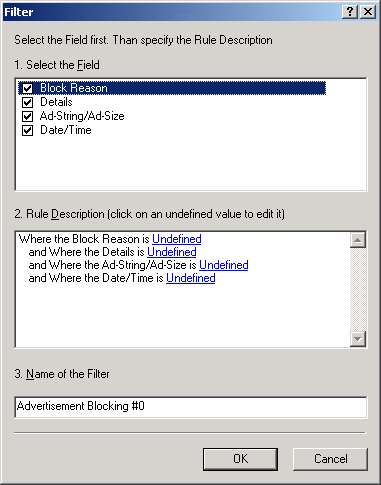
To specify a filtering rule, check each column of data in section 1 that you want to see. In the description field in section 2, the beginning part of the rule appears (such as Where the Start Time Is Undefined). To continue the rule, click Undefined.
In the dialog box that appears, you can specify various limitations for the selected column:
Figure 43
Filter by Time Dialog Box
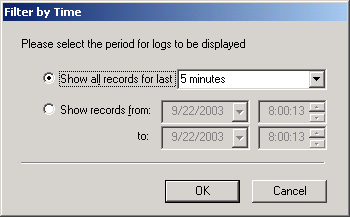
After specifying the limitations, click OK. The rule will be completed according to the choice you have made. For example: Where the Start Time Is Last 5 Minutes.
-
Specify as many rules as you like, then specify the filter name and click OK.
The new filter will appear in the Console tree.
To edit an existing filter:
-
Click the Edit Filter button in the Information panel.
-
Edit all the settings of the filter.
To remove an unnecessary filter:
-
Select it in the Console Tree.
-
Click the Remove Filter button.
Copying and Cleaning Logs
To save specific logged data to a text file or copy it to the clipboard (in order to paste it in other applications):
-
In the NCF main menu, click Tools > Novell Client Firewall Log Viewer.
-
In the Console tree, select the log you want.
-
Select the records you want to copy or export.
- To select a group of records, click the first record, hold down the Shift key, then click the last record.
- To select separate records, click each record while holding down the Ctrl key.
- To make an advanced selection by using one or several columns, right-click a record and then click Include Selection or Exclude Selection.
-
Right-click a record, then click Export or Copy.
-
Specify the folder to export the data to and give the new file a name. If you are copying records, then remember to paste them into another file.
-
Click OK.
Logs are stored in a database that is automatically compressed to conserve space on your hard disk, so there is usually no need to clear these logs. However, if you want to clear them:
-
In the NCF main menu, click Tools > Novell Client Firewall Log Viewer.
-
Select the log you want in the Console tree
-
Right-click in the Information Panel.
-
Click Clear Log.
Figure 44
Clear Log Dialog Box
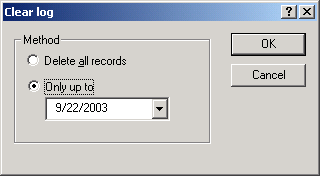
-
Either select Delete All Records or specify the date of the last record to be deleted.
Using Favorites
The Console tree consists of two tabs: Tree and Favorites. Favorites is where you can keep things that you use often.
You can add logs, presets, or filters that you frequently use to the Favorites tab for convenient and quick access:
-
From the NCF main menu, click Tools > Novell Client Firewall Log Viewer.
-
In the Console tree, right-click the desired item (group of logs, log, log preset, or filter), then click Add to Favorites.
You can also select the item from the Favorites menu.
The Add to Favorites dialog box appears:
Figure 45
Add to Favorites Dialog Box
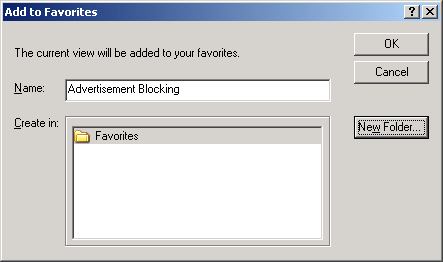
-
(Optional) Rename the item in the Name field.
-
Select a folder to place the item in or create a new one by clicking New Folder > OK.
The item now appears on the Favorites tab in the specified folder.
To display an item you saved in Favorites, click Favorites in the Console tree and select the item.
To delete an item from Favorites, click the Favorites tab, right-click the item, then click Remove.
To rearrange the order of items in Favorites, select Favorites from the NCF Viewer menu, then click Organize Favorites to get this dialog box:
Figure 46
Organize Favorites Dialog Box
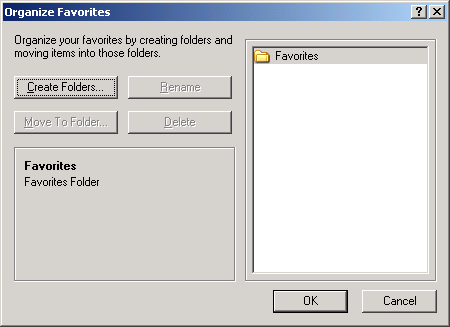
To create a new folder, click Create Folder.
To rename or delete an item, select the item and click Rename or Delete.
To move an item to another folder, click Move to Folder.
Figure 47
Select Favorites Folder Dialog Box
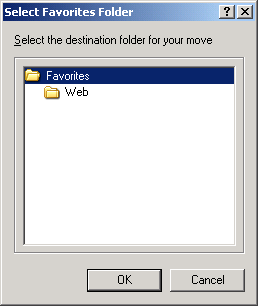
In the Select Favorites Folder, select the folder you want the item to be moved to, then click OK.





